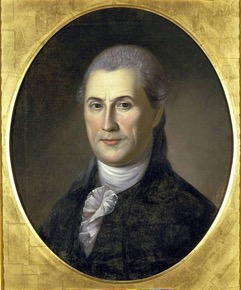In 1754, at age 23, Huntington was admitted to the Connecticut Bar. It was the beginning of a successful law career, and he served in various capacities, including King’s Attorney for Connecticut, and as a representative in the Connecticut Assembly. In 1774, Samuel became active with the Sons of Liberty, and was a vocal critic of the British Parliament. Because of this, he was elected as a delegate to the Second Continental Congress in 1775. Huntington took his place as representative in January of 1776.
While in Congress, he approved of and signed the Declaration of Independence. During the Revolution he was active in supporting the war effort, and his steady devotion led to him being elected President of the Continental Congress in 1789. He served two terms as President, and during his tenure he oversaw the ratification of the Articles of Confederation in 1781, which led to the creation of the United States as 13 unified states. After his time in Congress, Samuel returned to Connecticut, where he served first as Lieutenant Governor, then Governor, and he held this office until his death on January 5, 1796.
Samuel Huntington and his wife Martha had no children of their own; they adopted Samuel’s niece and nephew. Martha preceded Samuel in death; both he and his wife are interred in Old Norwichtown Cemetery.


